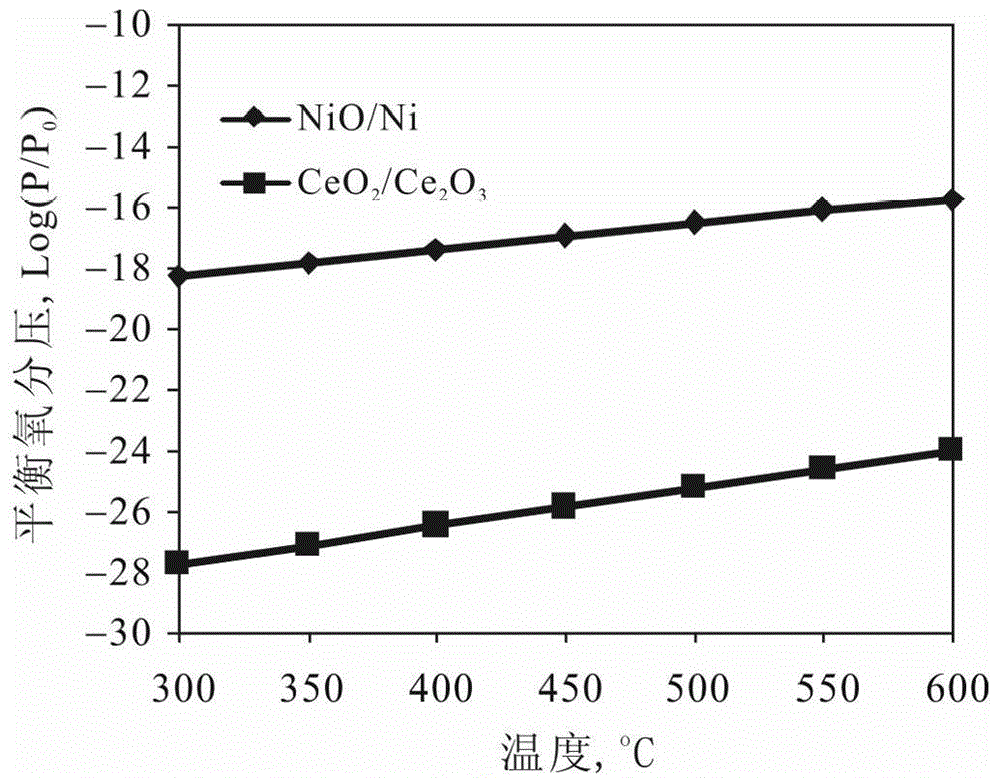A low-temperature solid oxide fuel cell supported by porous metal and its preparation method
A solid oxide and fuel cell technology, applied in fuel cells, battery electrodes, circuits, etc., can solve the problems of high ohmic impedance, low electrical conductivity, and inability to meet low-temperature SOFC working requirements, etc., and achieve low ohmic loss and mechanical strength High, fast and repeated start-up effect
- Summary
- Abstract
- Description
- Claims
- Application Information
AI Technical Summary
Problems solved by technology
Method used
Image
Examples
Embodiment 1
[0031] Such as figure 1 As shown, the low-temperature solid oxide fuel cell includes a porous metal support 1, an anode reaction layer 2, an electrolyte membrane 3, a cathode reaction layer 4, and a cathode current collecting layer 5.
[0032] In this embodiment, the plate-shaped porous metal support 1 uses foamed metal Ni, and its porosity is 50%. The anode reaction layer 2 uses a Ni-GDC (Gd doped cerium oxide) anode with a thickness of 20 μm. The electrolyte film 3 is also GDC with a thickness of 15 μm and is prepared by electrochemical vapor deposition. Cathode functional layer 4 is (La,Sr)(Co,Fe)O 3 The composite cathode composed of GDC and GDC has a thickness of 20μm.
[0033] Such as figure 2 As shown, the preparation method of the low-temperature solid oxide fuel cell is as follows:
[0034] (1) Prepare a flat metal support 1 made of foamed metal Ni;
[0035] (2) The anode material mixed with NiO and GDC is coated on the porous metal support 1, and the Ni-SDC anode reaction ...
Embodiment 2
[0040] The difference from Example 1 is that the metal support 1 is changed to a foamed Ni-Fe alloy, the porosity is 30%, the anode reaction layer 2 is NiCo-GDC, the thickness is 50 μm, and the reduction temperature is 400°C. The electrolyte film is changed to SDC (Sm doped cerium oxide), which is prepared by magnetron sputtering, with a thickness of 0.5 μm.
[0041] The maximum power density of the obtained single cell reaches 0.37 and 0.24W / cm at 600℃ and 500℃, respectively 2 , The corresponding current density is 0.92 / cm 2 And 0.75A / cm 2 .
Embodiment 3
[0043] The difference from Example 1 is that the metal support 1 is changed to a foamed Ni-Cr alloy with a porosity of 80%, and the anode reaction layer 2 is Ni / Pt (bimetal)-SDC (the Pt metal uses chloroplatinic acid It is the precursor), the thickness is 5μm. The electrolyte membrane is changed to Mg and Y co-doped cerium oxide, the thickness of the electrolyte membrane is 5μm, and the cathode functional layer is changed to (Sm,Sr)(Co)O 3 The composite cathode composed of SDC and SDC has a thickness of 50μm.
PUM
| Property | Measurement | Unit |
|---|---|---|
| thickness | aaaaa | aaaaa |
| thickness | aaaaa | aaaaa |
| thickness | aaaaa | aaaaa |
Abstract
Description
Claims
Application Information
 Login to View More
Login to View More - R&D
- Intellectual Property
- Life Sciences
- Materials
- Tech Scout
- Unparalleled Data Quality
- Higher Quality Content
- 60% Fewer Hallucinations
Browse by: Latest US Patents, China's latest patents, Technical Efficacy Thesaurus, Application Domain, Technology Topic, Popular Technical Reports.
© 2025 PatSnap. All rights reserved.Legal|Privacy policy|Modern Slavery Act Transparency Statement|Sitemap|About US| Contact US: help@patsnap.com



